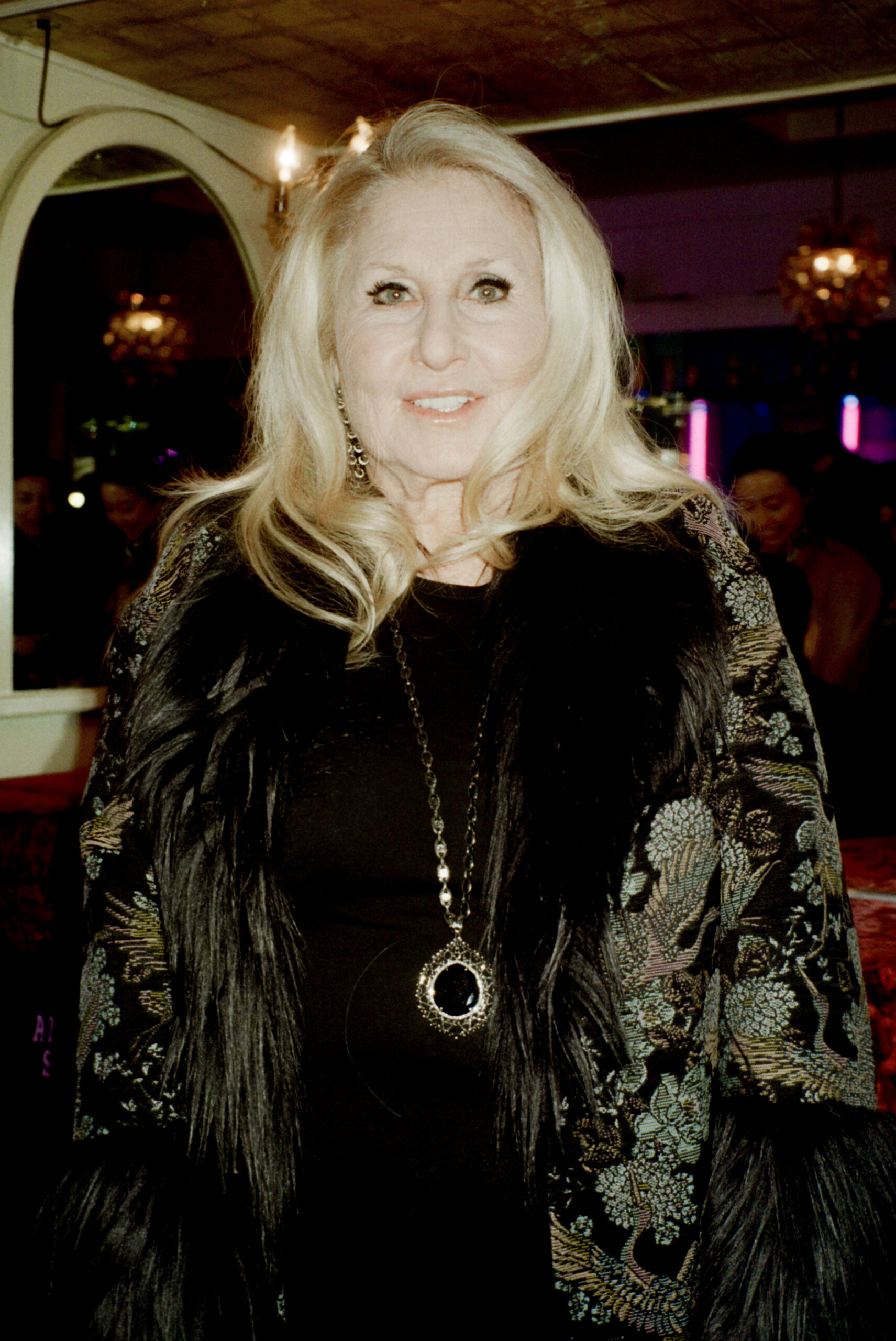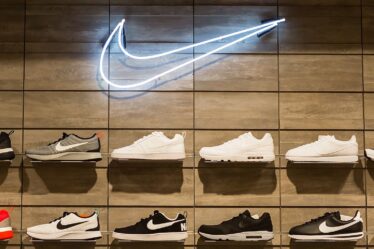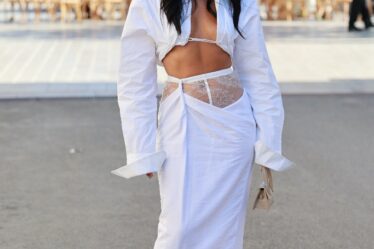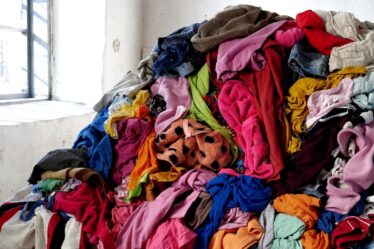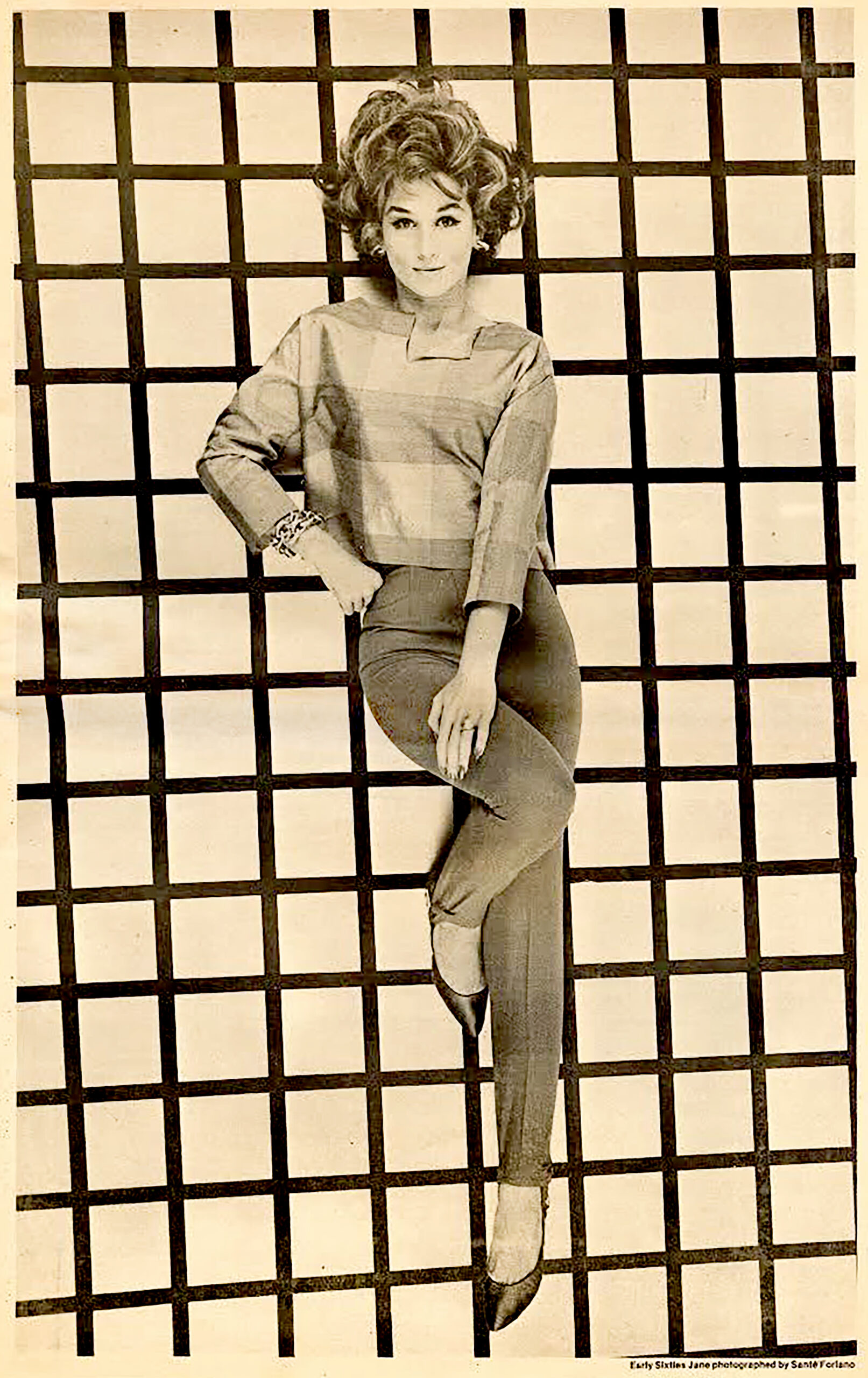
At Anna Sui’s FW23 presentation, the stage glowed purple as gloved models in sequined dresses twirled to the lyrics of Joey Dee & The Starliters: “Meet me baby, down at 45th street/Where the Peppermint Twisters meet.” Hailing from the Midwest, Sui was initially drawn to New York thanks to celebrity nightlife legends and Factory girls including “Baby” Jane Holzer, the it girl and Andy Warhol actor turned art collector who has since become the designer’s muse. After the show, the old friends called each other up to talk about vintage trends, mafia legends, and the iconic photo of Holzer at the Peppermint Lounge that paved the way for Sui’s sixties-inspired collection.
———
SUI: Hi Jane.
JANE HOLZER: Hi Anna.
SUI: How are you?
HOLZER: Good, thanks. And you?
SUI: I’m okay. We’re trying to finish our resort collection, so it’s been a little scary, but we’re getting there.
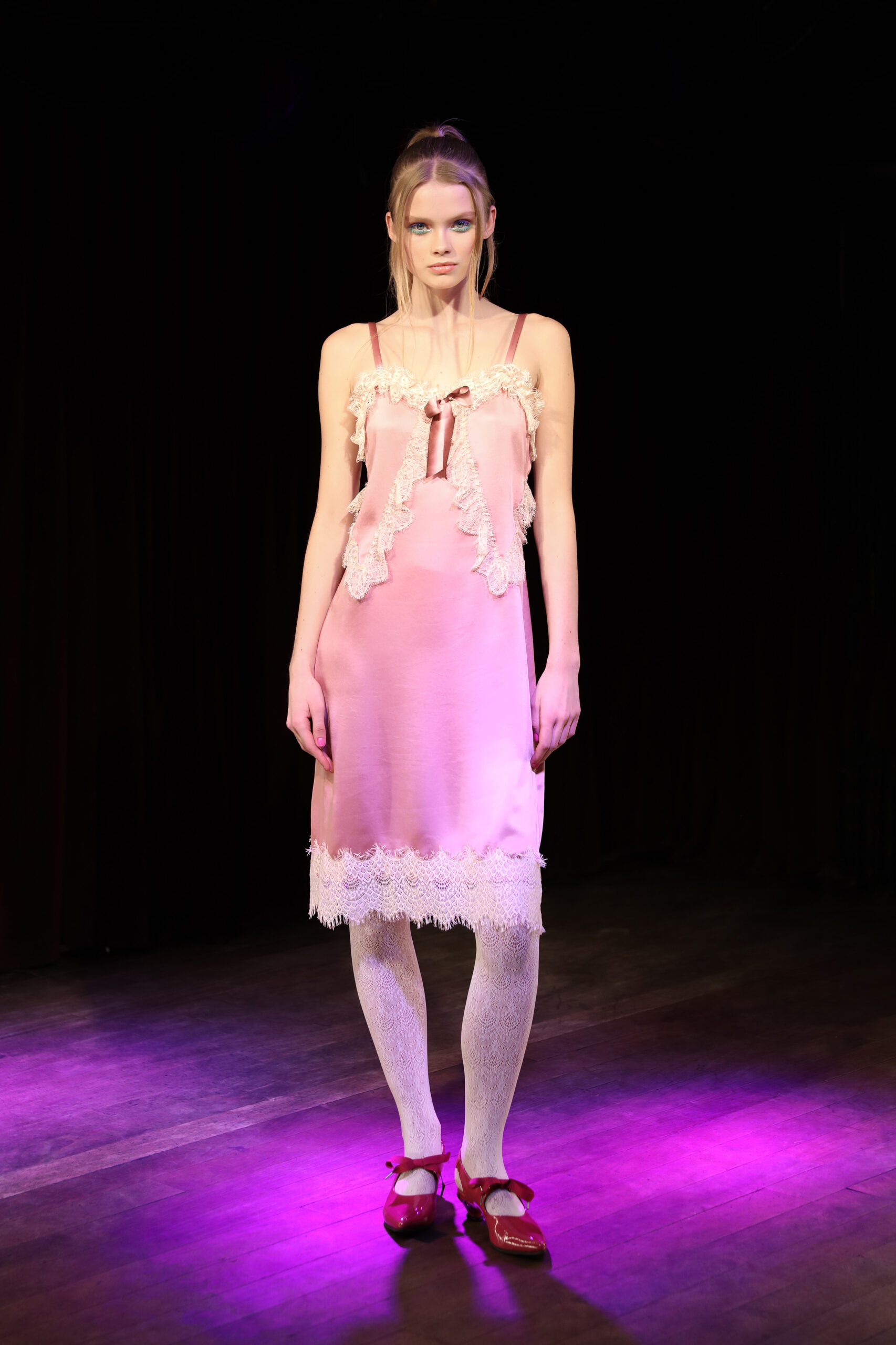
HOLZER: I can’t wait to see it.
SUI: Of course. So, Jane, I can never remember this. How did you and I meet?
HOLZER: I think it was at Steven [Meisel’s]. When we did the photo shoot with my dog.
SUI: That was the first time we actually had a conversation, but I idolized you since I saw that Life magazine article on underground fashion and you were modeling, and they projected old movies behind you, and you had on this great Ken Scott outfit that I actually found for the museum exhibition [The World of Anna Sui at the NSU Art Museum] in Florida.
HOLZER: Oh, wow.
SUI: Yeah. I don’t know if you remember, it had orange fur and it was—
HOLZER: I do remember.
SUI: It was so great. Jane was my inspiration at the Florida exhibition and also in the New York exhibit [at the Museum of Art and Design].
HOLZER: It’s nice to be an inspiration. Especially for you, because without you, I don’t know what I would do. Anna does all my clothes and thanks to her, I always look great.
SUI: It’s such an honor, and you have such amazing taste in everything, so it means so much to me that you wear my clothes. You make them look sensational. I saw that photograph of you at the Peppermint Lounge a while ago and I remember thinking, “Look at Jane. She’s out dancing and she’s got Kenneth [Battelle] hair.” When I started working on the collection, I was thinking about the Peppermint Lounge and the Twist and nightclubs during the sixties so I revisited that picture and I asked you about it. I had no idea who your dancing partner was.
HOLZER: It was Nicky Haslam, who was editor of Show magazine at the time. He was responsible for my Show magazine cover.
SUI: Which was so great and so crazy and so festive.
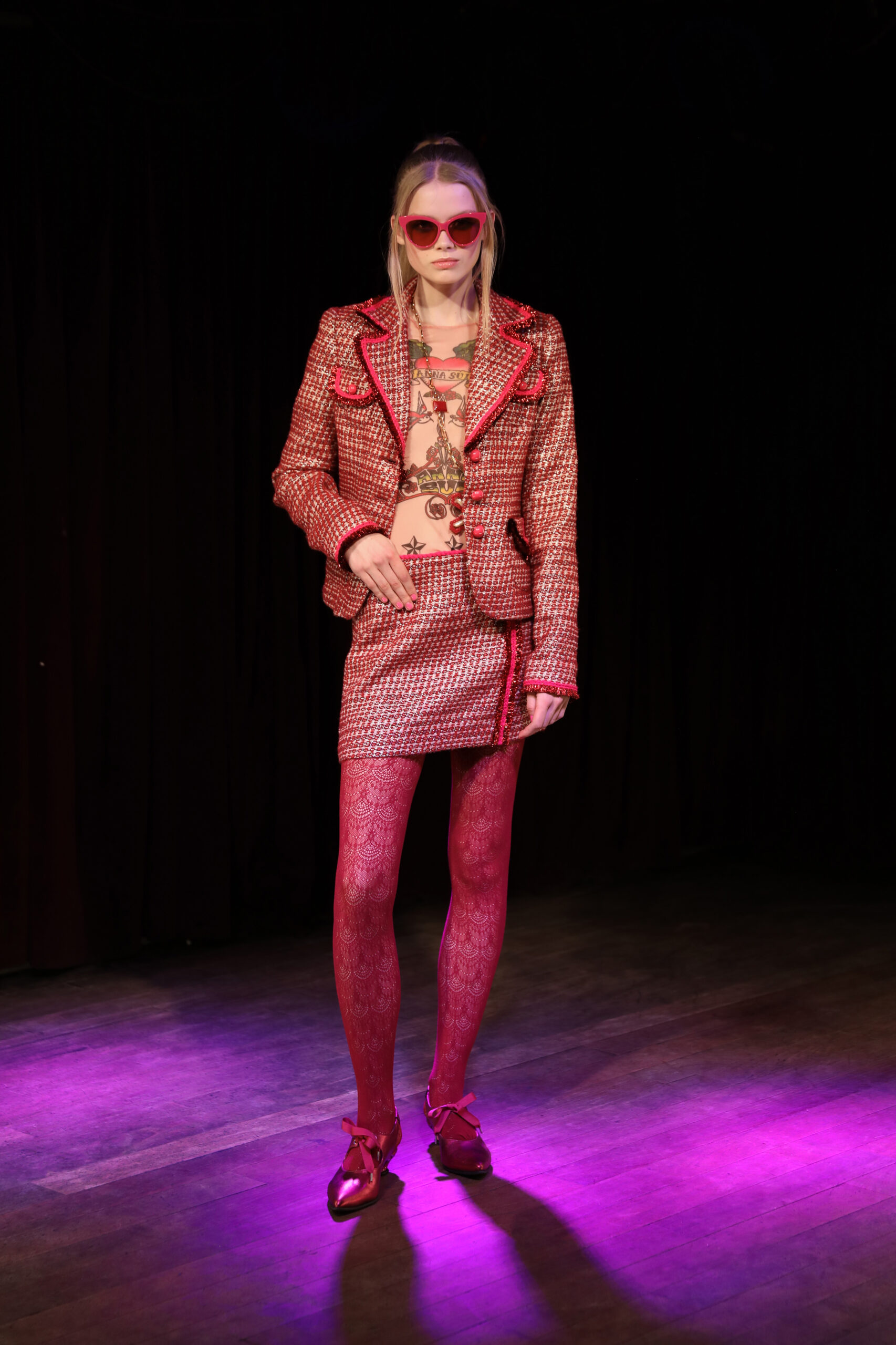
HOLZER: And that’s how we met Andy [Warhol]. Literally, we were out shopping for the Show cover and we bumped into him on the street. We were walking up Lexington Avenue, and Nicky saw Andy and ran across the street and said, “Oh, come meet Jane.” So I went across the street and the first thing Andy said was, “Do you want to be in the movies?” And I said, “Of course I do.”
SUI: And then I remember I asked you about your outfit.
HOLZER: Oh, for the Peppermint Lounge? Oh, god. It was the most beautiful Chanel dress and jacket.
SUI: And matching shoes.
HOLZER: Red shoes with gold toes. It was really, really, nice.
SUI: Yeah, so I had that picture of Jane and I was talking to Andrew Bolton [the curator at the Met Costume institute] about the inspiration [for the collection], and he said, “I think we have that outfit at the Met.” They had the whole outfit plus the matching shoes. Was it just so much fun going out back then?
HOLZER: It was the best. Today, you have to go to the gym and work out. Then, we would just go dancing at night.
SUI: And was more intimate. Wherever you went, you would see tons of people and famous people and happening people?
HOLZER: That was more in London. New York was not until, what’s the one on 14th Street that Ian [Shrager] opened? [Ed note: Shrager and Steve Rubell converted The Palladium on 14th street into a nightclub in 1984] Anyway, it wasn’t until there, and of course, Studio 54.
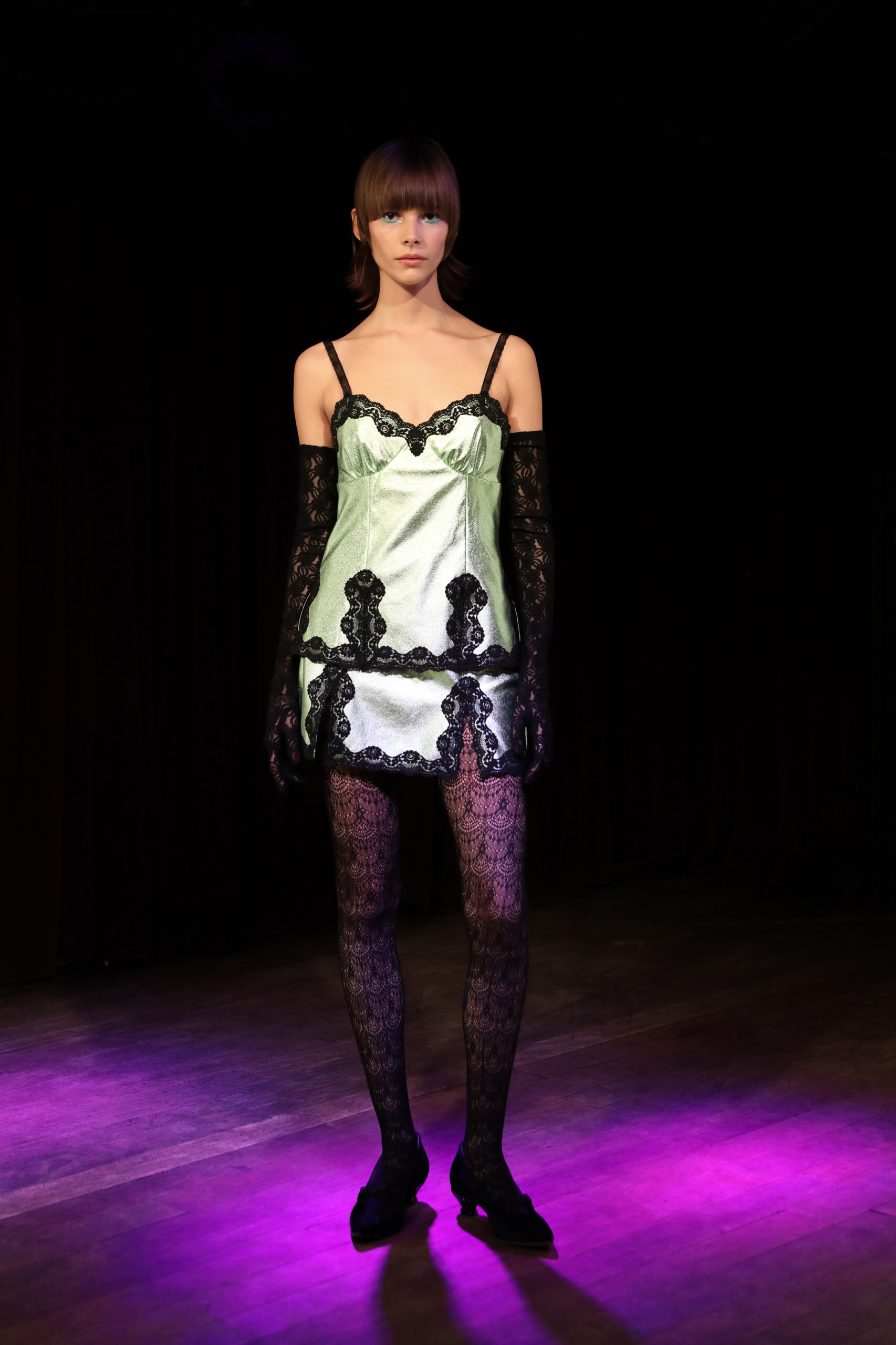
SUI: Right. How did you hear about the Peppermint Lounge? Maybe Nicky knew about it?
HOLZER: Maybe. Nicky was very hip. By the way, I loved your show. It was so alive and so great. The models were adorable, and the clothes were gorgeous.
SUI: I was trying to capture some of the energy that I felt from looking at those pictures.
TAYLORE SCARABELLI: Anna, were you always infatuated with that era in New York nightlife?
SUI: Totally. I’m of the generation that came to New York to meet Andy Warhol and all the superstars. We thought that everywhere you went, you were going to see everyone. And we did discover Max’s [Kansas City] and we saw a lot of people there, but I got kicked out when I went because I wasn’t old enough. So there were a few months when I couldn’t get in, and then finally Ray Johnson [the famous pop artist] saw me outside and he’s like, “What are you doing out here?” After that, Mickey [Ruskin, the owner] started letting me in.
SCARABELLI: Was it everything you hoped and dreamed, or did you feel like you missed the boat?
SUI: I mean, Max’s was pretty amazing because you never knew who was going to be there. It was whatever band was in town, whatever celebrities, and then a lot of the Warhol people. I mean, it was the tail end of that. But I did see Andrea Whips, Taylor Mead, Candy Darling, and Fred Hughes.
SCARABELLI: This is the early eighties?
SUI: Oh, no, no, no, this is the late seventies.
SCARABELLI: Okay. What were you wearing then?
SUI: It was the glam rock period. So there was a lot of leather, a lot of black and white, and sometimes red thrown in. It wasn’t too frilly or anything. It was the New York version of punk, lots of black t-shirts and tuxedo jackets and skinny pants. And I always wore them with heels—I’d look for Yves Saint Laurent heels on sale. It was the early punk look.
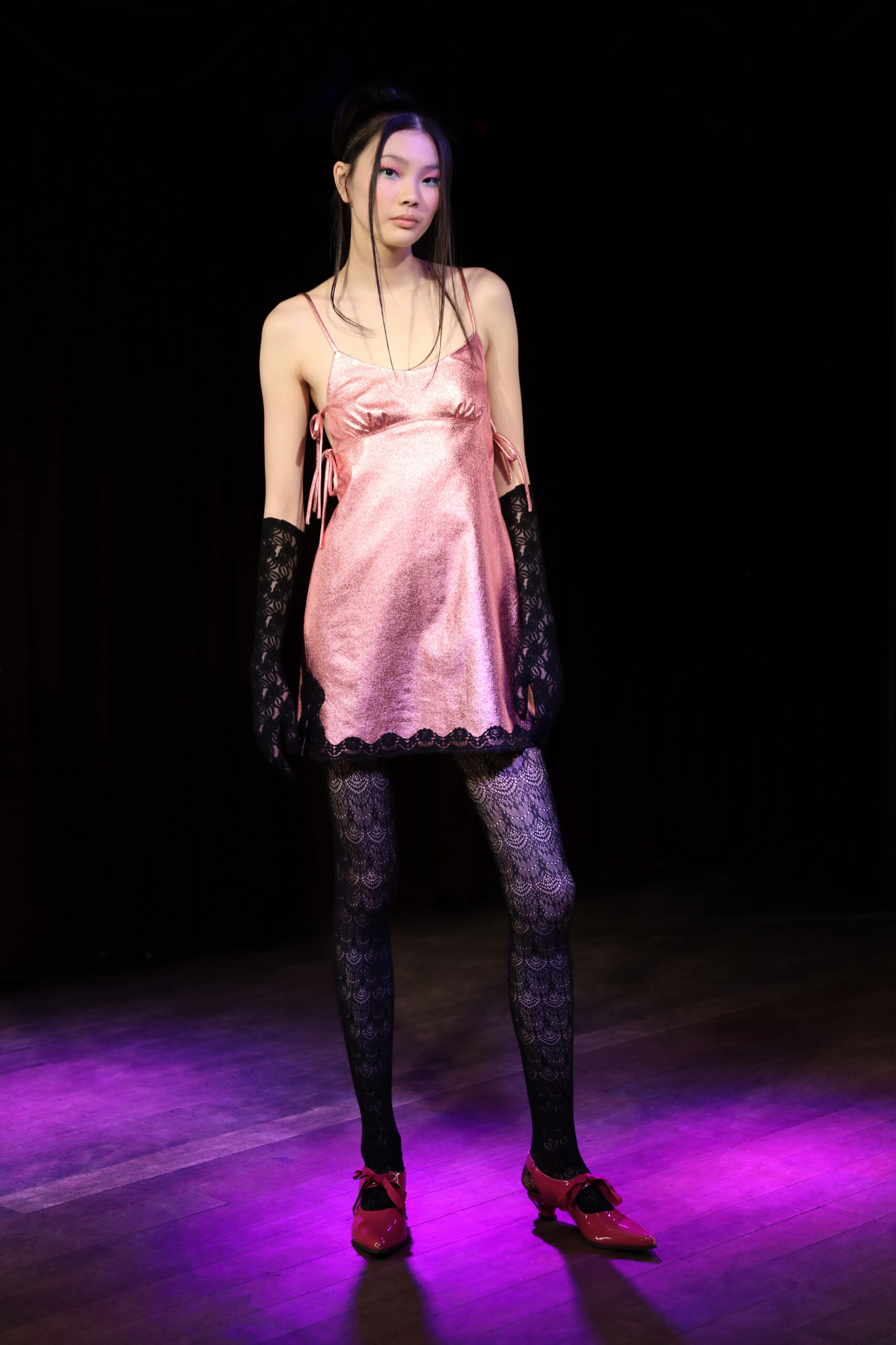
HOLZER: And I don’t know if people know this, but Andy, when any new artist came to town—and it didn’t have to be a painter, it could be a photographer, it could be someone making clothes—he would pick up their tab at Max’s. He would also feed people, but he didn’t want to give anyone money because he was afraid they would buy drugs.
SUI: That’s amazing, isn’t it? I remember, I don’t know if it was Holly Woodlawn or Candy Darling, but people would be complaining like, “Oh, I don’t know if I’m still on Andy’s tab.” I remember that was the big concern, how they were going to pay for their drinks or meals.
HOLZER: I mean, it’s shocking who was on his tab. Anyway, it’s just a little known fact because people don’t think of Andy as being this incredibly generous person, but he really, really was. Just like you.
SUI: And you.
SCARABELLI: Back then it was easier to differentiate yourself through style. Do you think that there’s still subcultures within fashion today, or it’s all over the map?
SUI: I mean, that’s the amazing thing about fashion. There’s always a look, a trend, a subculture. I love seeing somebody on the street that just really stands out, or has a new twist on how to put looks together. And I thrive on street fashion, more so than celebrity fashion, which seems to drive a lot today.
HOLZER: And I mean, you can pay $2,000 or $4,000 for a jacket, but you can also go to the Salvation Army and get a vintage one just like it.
SUI: And look just as good. That’s what we did when I was at Parsons. And in those early days of the punk scene and the Mud Club, we all looked like movie stars. We all shopped thrift and would buy beaded forties dresses with sequins. It was all about the hair and the makeup that would give you the eighties look. But you would shop all vintage for your clothes.
HOLZER: I love shopping vintage, too. I used to love getting forties gowns. I just wish I could still fit into them.
SUI: There’s nothing more beautiful than those dresses. They were so beautifully made and had so much detail, it was a movie star fantasy.
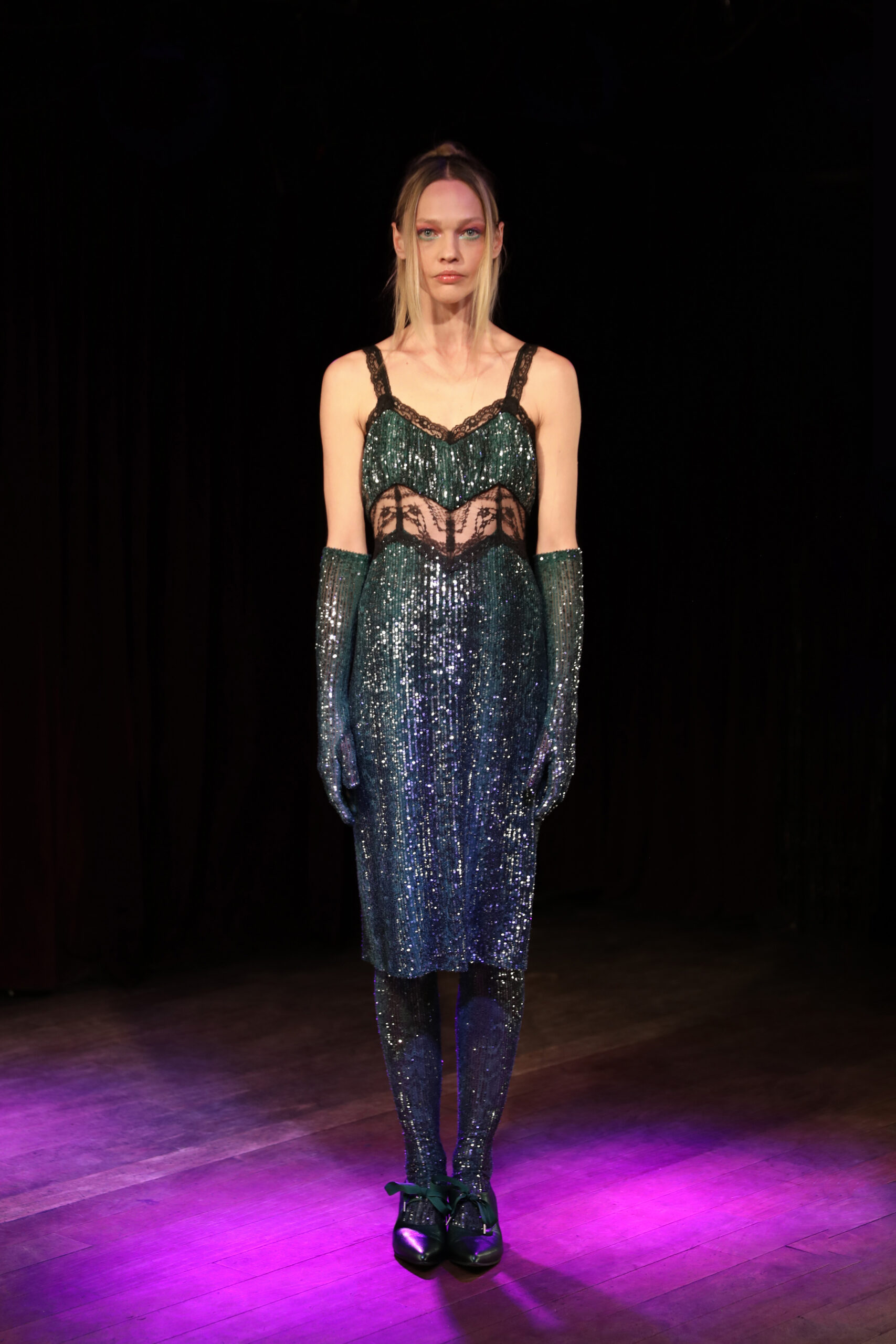
SCARABELLI: There’s been such a huge revival of vintage shopping in a way that there hasn’t been before. But when everyone’s wearing vintage, it loses its luster in some ways. It’s very hard to come up with something that feels unique. But I think it’s interesting to hear about your latest collection and how you combine eras. I wonder if you want to talk about any of your other influences or what you were thinking about for this season?
SUI: There is a lot of sixties influence in the silhouettes and the lengths of the skirts. But I also paired that with metallic cowboy boots, pastel leathers, and a lot of lace trim. But I think that the whole key is keeping it relevant. You can’t just go full-swing sixties mod. Also, the fabrics are different today. There’s always a stretch, whereas back in the day, there wasn’t. So no matter what you do, it’s going to be much more modern because of the technology in the fabrication.
SCARABELLI: I’ve noticed a lot of Gen Z and millennials are really obsessing over your vintage styles to the point where there’s been viral tweets about people trying to source some of your designs from the nineties. Have you seen that?
SUI: Yeah. It’s so much fun because during all these years, I never really looked back. We’ve saved everything, but I never even looked at my archives. In the past few years, there’s been such an interest in nineties fashion, and I had that exhibition that was here at the Museum of Art and Design, and that was the first time that we went back into the archives and pulled things from them. And then when we did that exhibit, Opening Ceremony asked me to recreate 10 pieces. And then a year or two later, Marc Jacobs asked me to recreate my grunge collection because he was reviving his Perry Ellis grunge collection too. It’s been really fun and exciting to see another generation enjoying it and adapting their look to that style.
SCARABELLI: And Jane also was just featured on the cover of the “it” girl issue of New York Magazine. I’m wondering how it felt to be honored as a style icon for a new generation of kids who are maybe being introduced to you for the first time.
JANE HOLZER: It was fun. That was a little nothing Paraphernalia dress, I think. And the boots were just patent leather boots, and I don’t even remember where they came from. It’s a Jack Robinson photograph, and as it happened, my goddaughter saw it online and I bought it, and then all of a sudden it’s on the cover. It’s crazy.

SCARABELLI: What a time.
SUI: Yeah. The funny thing is I thought that the Peppermint Lounge was just this innocent Italian restaurant that the kids decided to start inviting their friends to on Friday and Saturday nights. Then I read a book about it that my friend Linda Ramone gave me. Yeah, it was a family business but it was the Genovese family. They only employed mafia people, and it was like this cash cow for the Mafia. But back then, that was the record business and the music business and show business.
HOLZER: And we all loved it. There was a guy called Joe who would lead off everything. There would be a conga line and Joe would be at the head of it. And I think we took him to other parties because he was so much fun.
SUI: Was it Killer Joe [Piro]?
HOLZER: Killer Joe, yeah.
SUI: He was in Smirnoff Ads. And there was a song too [by The Rocky Fellers], “Killer Joe.”
HOLZER: He was so cool. He was like this crazy old guy. I mean, he wasn’t that old, but he was old to us.
SUI: Yeah. And then I think some of the go-go girls were actually the Ronettes, like Ronnie Specter and her sisters, but they were underage. They would go there every night and they had these little outfits that they would wear and they would get up and dance, and it would get other people going too.
HOLZER: It was really fun.
SUI: But Killer Joe, he was a big deal choreographer. I remember seeing him in those ads. Maybe one with Peggy Moffitt.
HOLZER: Oh, that’s so funny. Send that if you have it.
SUI: I’m going to look for it.
SCARABELLI: Thank you both for taking the time to chat today.
SUI: Oh, thank you. And thank you, Jane.
HOLZER: Thank you for everything, Anna.
SUI: You’re such an inspiration.
HOLZER: Oh, you’re my angel. Thank you, everybody.

